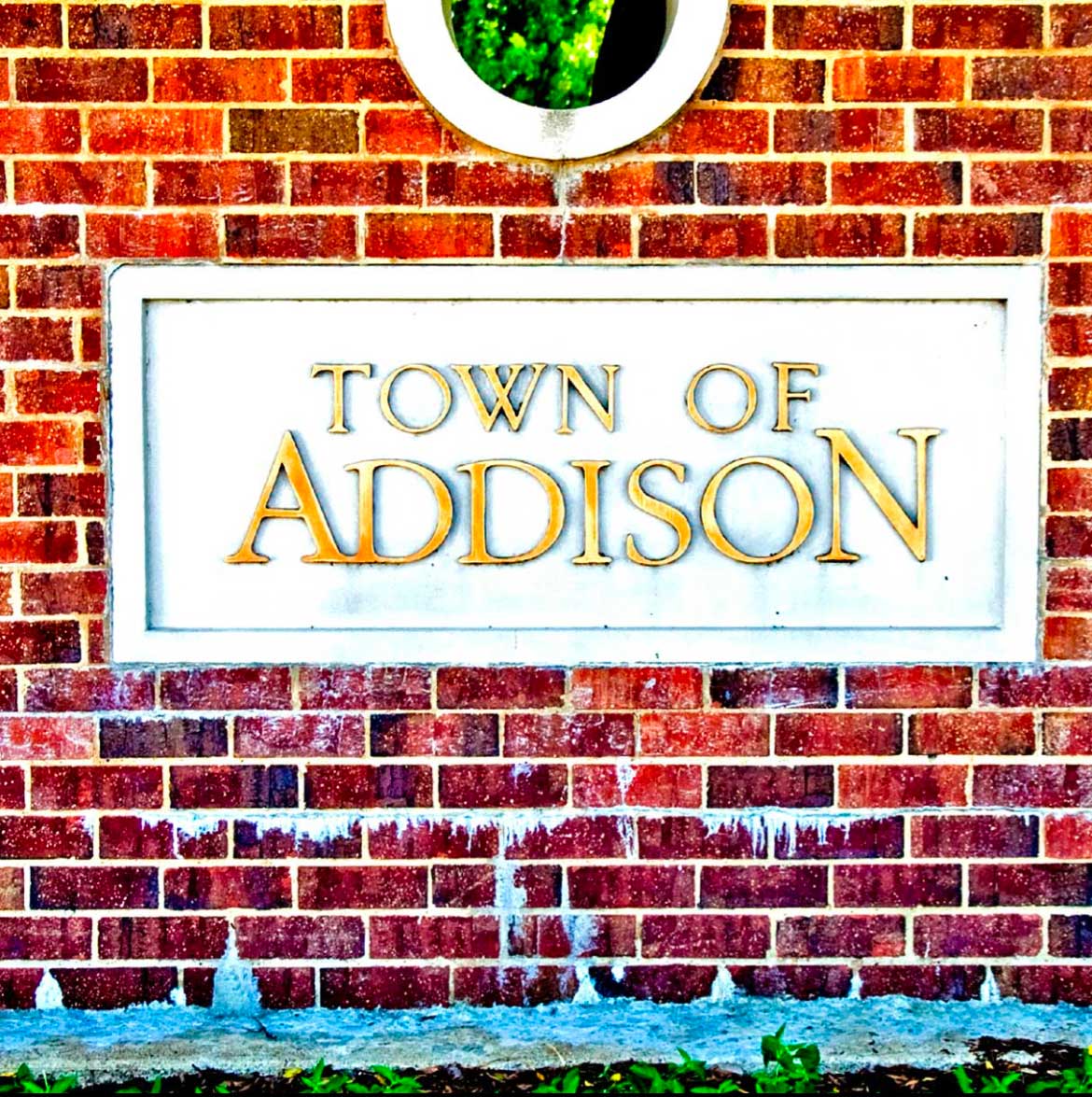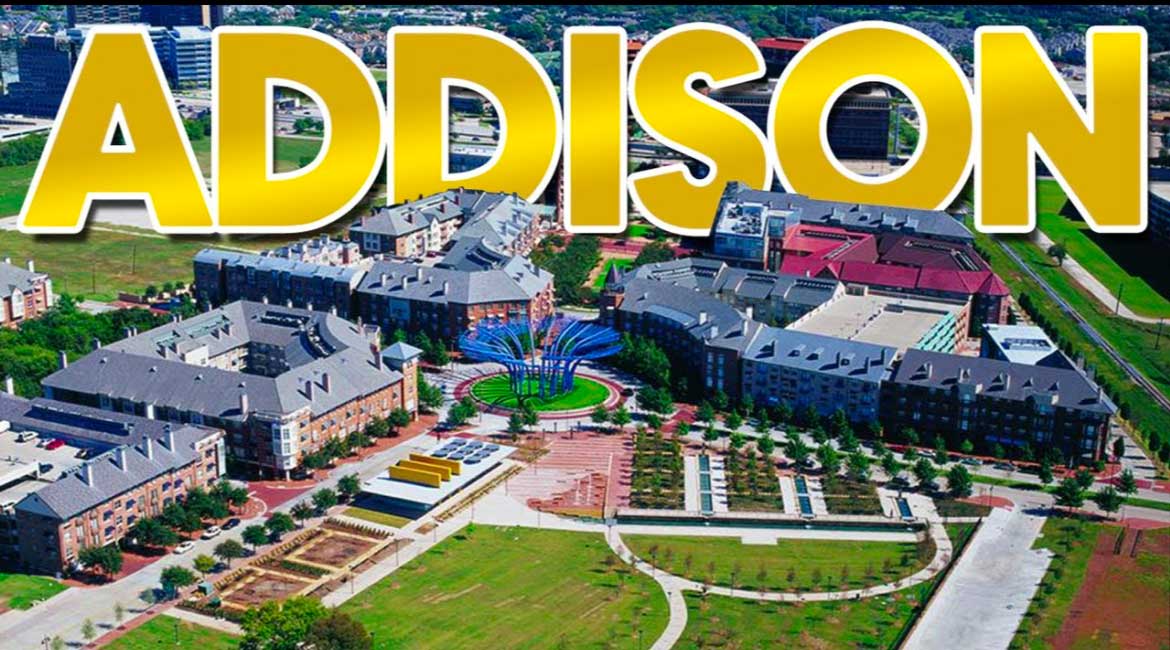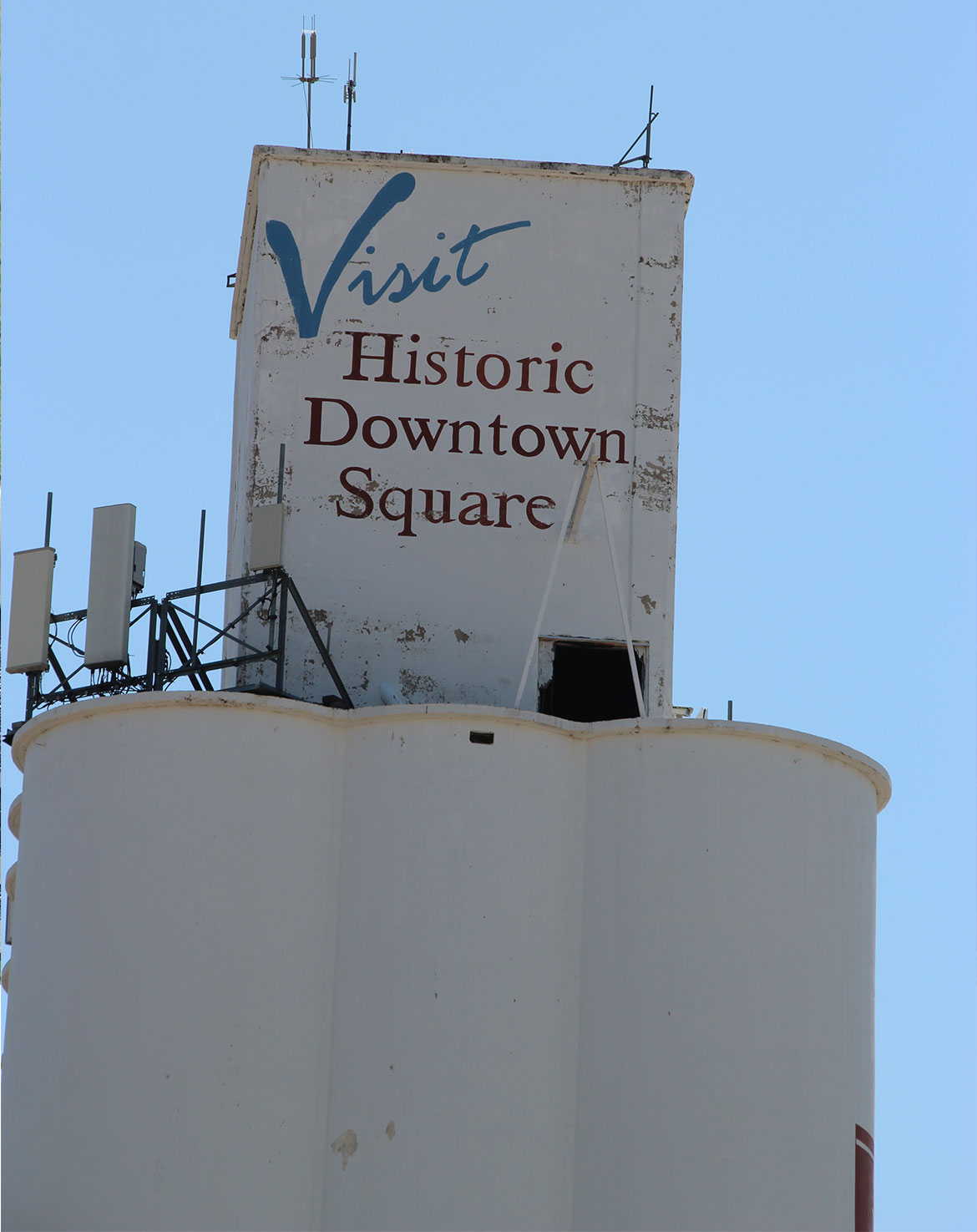History of Addison, TX
From the Beginning to Where We Are Today!
The Town of Addison is located in an area once called Peters Colony. It was settled as early as 1846 when Preston Witt, one of the first recorded settlers in the area, built a house on White Rock Creek. He established Trinity Mill, a successful mill he operated with his brother Wade Witt and their brother-in-law A.W. Perry.
Addison was originally named Noell Junction after S.S. Noell who lived on 1,200 acres south of Belt Line Road from Midway Road to Preston Road. Noell was a charter member of the Addison Methodist Church and gave land in order to get the Cotton Belt Railroad to build a rail line to Dallas through Addison.
However, when a post office was authorized, it was discovered there was already one designated as Noel in another part of Texas. The town was then renamed for local carpenter and Civil War veteran Addison Robertson, who served as the community’s second postmaster from 1908-1916. In 1902, a cotton gin was built on Addison Road, and the business was later known as the Plano Cotton Oil Mill in 1904 and the Farmers Gin of Addison in 1919.
The Addison School Building was built in 1914 on Belt Line Road, which was then a dirt road, and served the community until 1954 when the Addison district merged with the Dallas Independent School District. That original building was closed in 1964 and now serves as the Addison Magic Time Machine Restaurant.
The City of Addison was incorporated on June 15, 1953, under an aldermanic form of government and was changed to the “Town of Addison” in 1982. In 1956 construction began on the Addison Airport, which was eventually purchased by the Town in 1975 using an FAA grant.
In 1978, the Town of Addison constructed its first town park, and by 1980 an aggressive beautification program was underway. Today, Addison’s 118 acres of parks are some of the finest in Texas, each uniquely themed and beautifully landscaped.
Another big change for the Town of Addison was an election in 1975 to allow liquor by the drink – one of the few communities in the area to do so at the time. This was a major contribution to the expansion of businesses and restaurants, making Addison a dining destination for the greater Dallas area.

History of Carrollton, TX
From the Beginning to Where We Are Today!
The City of Carrollton has page featuring information on the history of the community and incudes a history tour map, historical references and much more. Visit it here. https://www.cityofcarrollton.com/about-us/community-profile/history
The City of Carrollton is a part of a greater area of land that was once home to Native Americans known as the Wichita. This group was divided into several tribes – the most predominant being the Tawakonis, Wacos, Taovayas, and Wichita’s proper. They migrated from what is now Kansas and established villages along the Trinity, Red, and Brazos rivers about the same time the French and Spanish were competing to establish a foothold in east Texas in the late 1600s.
Carrollton’s early settlers arrived in the 1840s and purchased land from The Peters Colony. These people had the determination to withstand the hardships of their treacherous journeys to this frontier. They planted crops, raised cattle and sheep, and built homes and churches.
Most local historians believe Carrollton received its name from the hometown of early settlers, who came from Carrollton, Illinois. The name was officially established on May 16, 1878, when the first U.S. Post Office opened in Carrollton.
Farming was the main form of occupation, but many professionals supplemented their income by farming and raising cattle. Teachers, lawyers, preachers, and doctors also came to the area.
During this time of settlement, newcomers were camping and building cabins in an area around present-day Perry Park. The rise of the land to the south provided a good lookout advantage, and the springs provided plenty of clear, fresh water.
By 1853, Trinity Mills was a thriving grain mill, which was typically surrounded by wagons, carts, buggies, horses, and people. The mill produced flour and meal from corn and wheat. People came from miles around to have their corn and wheat ground into meal and flour.
The first composite listing of business, industrial, and professional services available in Carrollton is found in the Texas State Gazetteer and Business Directory for 1882. With an estimated population of 500, the town had one steam gristmill, four cotton gins, two churches, and two schools. Exports were cotton and grain.
Around 1904, a new industry emerged in Carrollton – manufacturing brick. The Carrollton Pressed Brick Company was located northeast of the Carrollton Town Square, adjacent to the Cotton Belt and Frisco railroads. Brick from this plant is easily identified. They have the name CARROLLTON embedded on it and are highly prized by collectors.

History of Farmers, TX
From the Beginning to Where We Are Today!
Farmers Branch was settled in 1842 by Thomas Keenan and his wife, Sarah. The area was called Mustang, as part of Peter’s Colony, but later changed to Farmers Branch due to the rich soil and flourishing crops. The settlement originally included all the land between White Rock Creek on the east, the Elm Fork of the Trinity on the west, the Dallas County Line on the north and Cedar Springs on the south. During the years between 1845 and 1850, it was the best-known of all of the Texas settlements.
The Rev. William Bowles, a Baptist minister, started a blacksmith shop and gristmill in 1845. The same year, Isaac Webb donated land for Webb’s Chapel Methodist Church, which also served as the first school in the county. Mr. Webb was also the first postmaster when the Farmers Branch Post Office was established in 1848. Other early settlers included Dr. Samuel Gilbert and his wife, Julia. The couple lived with Isaac Webb until their home was completed in a grove of stately post oak trees. The Gilbert House, now located in Farmers Branch Historical Park, consists of two-foot-thick limestone walls and chestnut plank floors.
In 1874, Dr. Gilbert and other local settlers sold right-of-way through their land to ensure that railroads would come to Farmers Branch. Around 1877, the Dallas and Wichita Railroad built a depot in Farmers Branch. This original depot has been restored and relocated to the Farmers Branch Historical Park.
The City of Farmers Branch was incorporated in an election on February 23, 1946. The population was 800 that year and grew to 36,165 as of the 2020 census. The 2025 population is projected to be about 42,283.

Stay in the know!
Follow Housewarmers of the Metrocrest Area on Facebook to stay up-to-date with what’s going on in our community!
Or get it delivered to your email inbox!
Follow Us on Facebook
Keep up with the Metrocrest Area on Facebook
